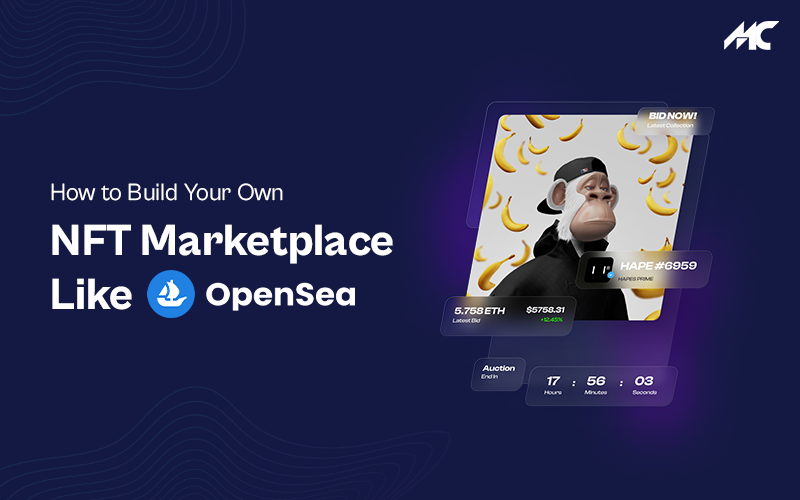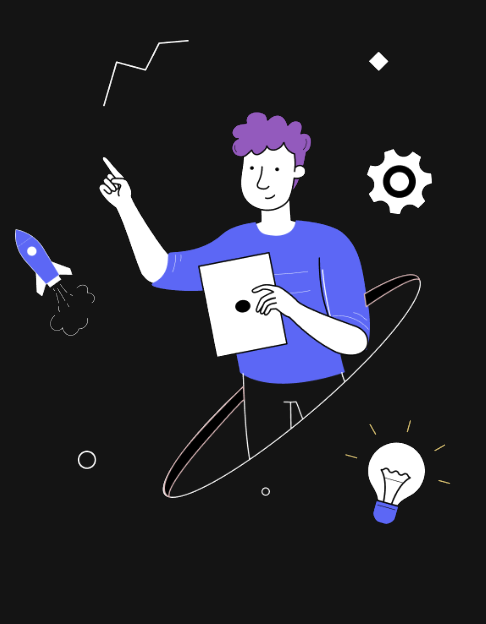How to Build Your Own NFT Marketplace Like Opensea?
Investing in NFT marketplace development is enabling hundreds of businesses to make instant money by facilitating a market for digital assets. Above all, NFT has become one of the hottest topics in the industry in 2022. OpenSea is known as the largest NFT marketplace with a humongous market cap of $3.4 billion in 2021. This marketplace enables users to trade digital assets and crypto-collectables with others.
In this blog, we are going to learn how you can build your own NFT marketplace like OpenSea.
Before we talk about the process of building an NFT marketplace like Open, we should learn a few things about NFTs.
- What Is An NFT?
- Key Features of NFTs
- What is Meant by NFT Marketplace Development?
- Open Sea: A Successful NFT Marketplace
- Reasons Behind the Popularity of Open Sea
- Important Features For NFT Marketplace Development
- NFT Marketplace Development Cost Like OpenSea
- How MobileCoderz Can Help You With NFT Marketplace Development?
- Common FAQs Related to NFT Marketplace Development
What Is An NFT?
An NFT or a Non-Fungible Token is basically a cryptographic asset present on a Blockchain network. Content creators and individuals can mint their own NFTs for any digital asset such as video, image, artwork, audio, etc. However, it is also possible to use NFTs for backing up a real-world asset like real estate. Every NFT is encrypted with the help of a unique code.
Unlike cryptocurrencies, it is not possible to replicate an NFT on a Blockchain. However, you can just change the ownership of NFTs. Furthermore, complex digital signatures and encryption codes are used for creating protection against hacking, duplication, and theft.
Key Features of NFTs
Each NFT product on a marketplace is unique. For this reason, they attract a lot of investors, businesses, and collectors. These are some of the key characteristics of NFTs;
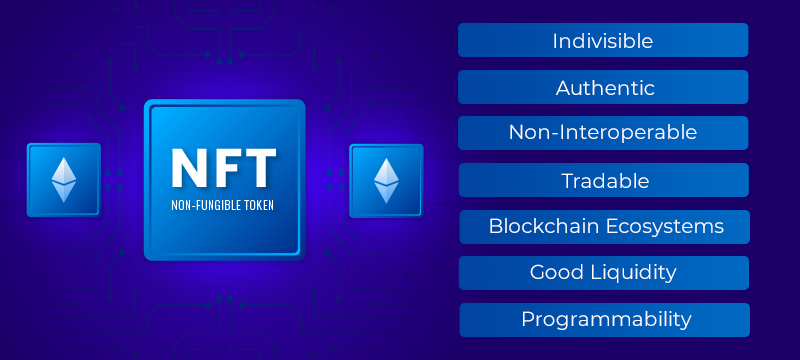

1. Indivisible
You cannot divide an NFT token into smaller denominations. However, this is possible with other cryptocurrencies.
2. Authentic
Every NFT must have a valid owner. The ownership could be transferred and verified accordingly.
3. Non-Interoperable
Each NFT will have a different value. Thus, it might not be possible to exchange them like other popular cryptocurrencies like BTC, Ether, or XRP.
4. Tradable
It is possible to trade NFT tokens with the help of numerous cryptocurrency exchanges. Trading platforms like an NFT marketplace can provide practically limitless trading facilities to NFT owners and investors.
5. Connected with Various Blockchain Ecosystems
Today’s NFTs are known for being amazing digital collectables that can work with various standards such as ERC1155 and 721.
6. Good Liquidity
Due to the limitless possibilities of trading without losing any value, NFTs provide high liquidity. For this reason, even mainstream internet users might have an interest in purchasing NFTs.
7. Programmability
Building an NFT is a long and complex process. However, the creators can unleash their creativity by exploring crafting and generating possibilities.
What is Meant by NFT Marketplace Development?
NFT marketplace development is the long process of creating a store where users can buy or sell NFTs with ease. Moreover, the final stores have an interface and user flow just like traditional eCommerce stores. However, every trade is done for virtual items, unlike real-world products.
In order to build your own NFT marketplace, you have to hire Blockchain developers from a prominent Blockchain development company. These developers would often use innovative Blockchain technologies like Binance, Ethereum, Solana, Smart Chain, etc.
Open Sea: A Successful NFT Marketplace
Today, there are tons of NFT marketplaces to choose from. However, OpenSea stands as the largest digital marketplace for crypto collectables and NFTs. Both entrepreneurs and content creators are able to participate in the next-generation digital ownership and digital economy of the future. In fact, it is the perfect example of quality NFT marketplace development.
The platform enables users to buy or sell collectables with ease. However, the users have to set up a wallet in order to make any purchase from OpenSea.
OpenSea Market Overview
- OpenSea has over 1 million active users on its NFT marketplace
- There are more than 80 million types of unique NFTs present on the platform
- Around 23% of the total traffic of OpenSea comes from the United States of America
- OpenSea generated total revenue of $365 million in the year 2021.
- OpenSea currently holds a market value of $13.3 billion
- The average trading value of OpenSea is more than $260 million
Reasons Behind the Popularity of Open Sea


Content creators and users often use NFTs for representing any original artwork to earn big profits. Above all, OpenSea has been one of the first players to develop an NFT marketplace for the active trading of NFTs.
These are some important reasons why OpenSea is different from other NFT marketplaces;
1. Multiple Wallet Support
OpenSea is known for supporting multiple wallets such as MathWallet, MetaMask, TrustWallet, etc. In fact, having an integrated wallet is one of the most important features of NFT marketplaces .
2. Currency Support
OpenSea is known for supporting more than 150 cryptocurrencies like ETH, WETH, and many more.
3. Affordable Service Fee
Unlike other NFT marketplaces, Open Sea provides remarkably affordable services at a 2.5% commission and service fee. Moreover, this is comparatively low compared with other NFT marketplaces.
4. Better Security Standards
OpenSea uses robust Blockchain standards to secure the NFTs. Thus, users can ensure better security while buying or trading NFTs on the OpenSea platform.
Important Features For NFT Marketplace Development
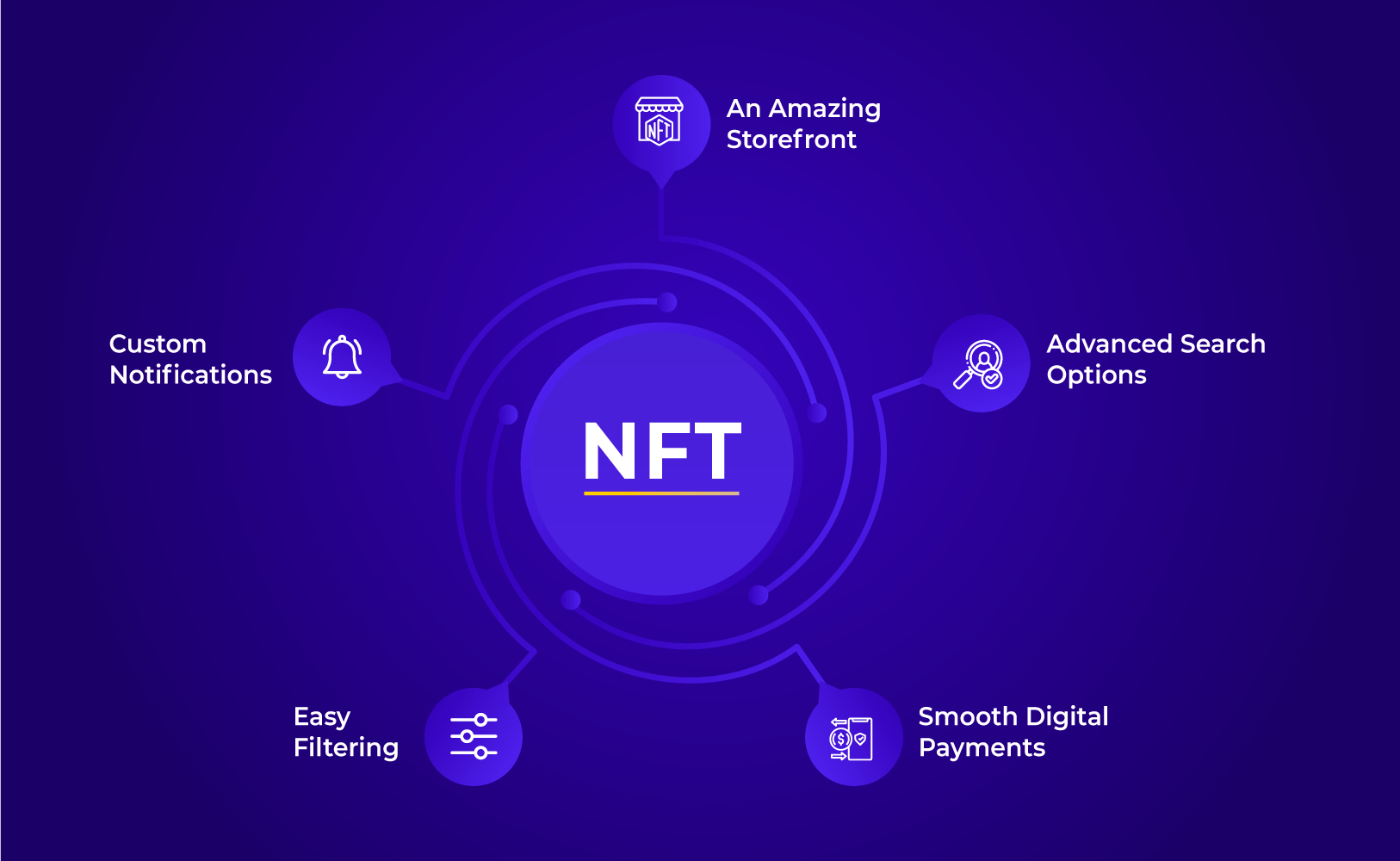

If you are planning to develop an NFT marketplace like OpenSea, then you have to hire marketplace developers who can implement the following features;
-
An Amazing Storefront
A storefront of an NFT marketplace is like a homepage where you will have your NFT exhibition. Furthermore, to make it informative, you can include critical information such as owner information, token name, pricing info, description, and more. Above all, you can make the design incredibly appealing with the help of a prominent NFT marketplace development company.
-
Advanced Search Options
Search options provide the most relevant search results to ensure better user engagement. Therefore, Thus, your development team must include advanced filters and customization options. Ultimately, the user experience will also be much superior when you have such advanced integrations.
-
Smooth Digital Payments
Just like a traditional eCommerce website, an NFT marketplace should also provide multiple payment options to the users. For this reason, payment methods should include both fiat currencies and cryptocurrencies for added convenience.
-
Easy Filtering
Making the best use of filters helps users to easily categorize the NFTs on the marketplace. In fact, the shopping experience is much superior when you enable the users to categorize NFTs accordingly. In order to implement such functionality, you should hire Blockchain developers with proper certification and skills.
-
Custom Notifications
When you are developing an NFT marketplace like OpenSea, then it becomes important to implement custom notifications. Above all, these notifications are very useful for notifying users about the sale of digital assets, special offers, new bids, and other important updates. Ultimately, having the right NFT marketplace developers can help you implement such special features into your marketplace.
Different Monetization Strategies to Build an NFT Marketplace Like OpenSea
When you are investing money in NFT marketplace development, you have to create a monetization strategy which will ensure ROI. These are some of the most prominent strategies that you should consider while building an NFT marketplace like OpenSea;
- Transaction Fees
- Initial Setup Fees
- Minting Fees
- Listing Fees
- Bidding Charges
- And more!
The Development Process of NFT Marketplace
Working on the Blockchain itself is not an easy task. It requires extensive experience and skills for proper NFT marketplace development. Moreover, there are multiple technology stacks and tools required for creating an NFT marketplace like OpenSea.
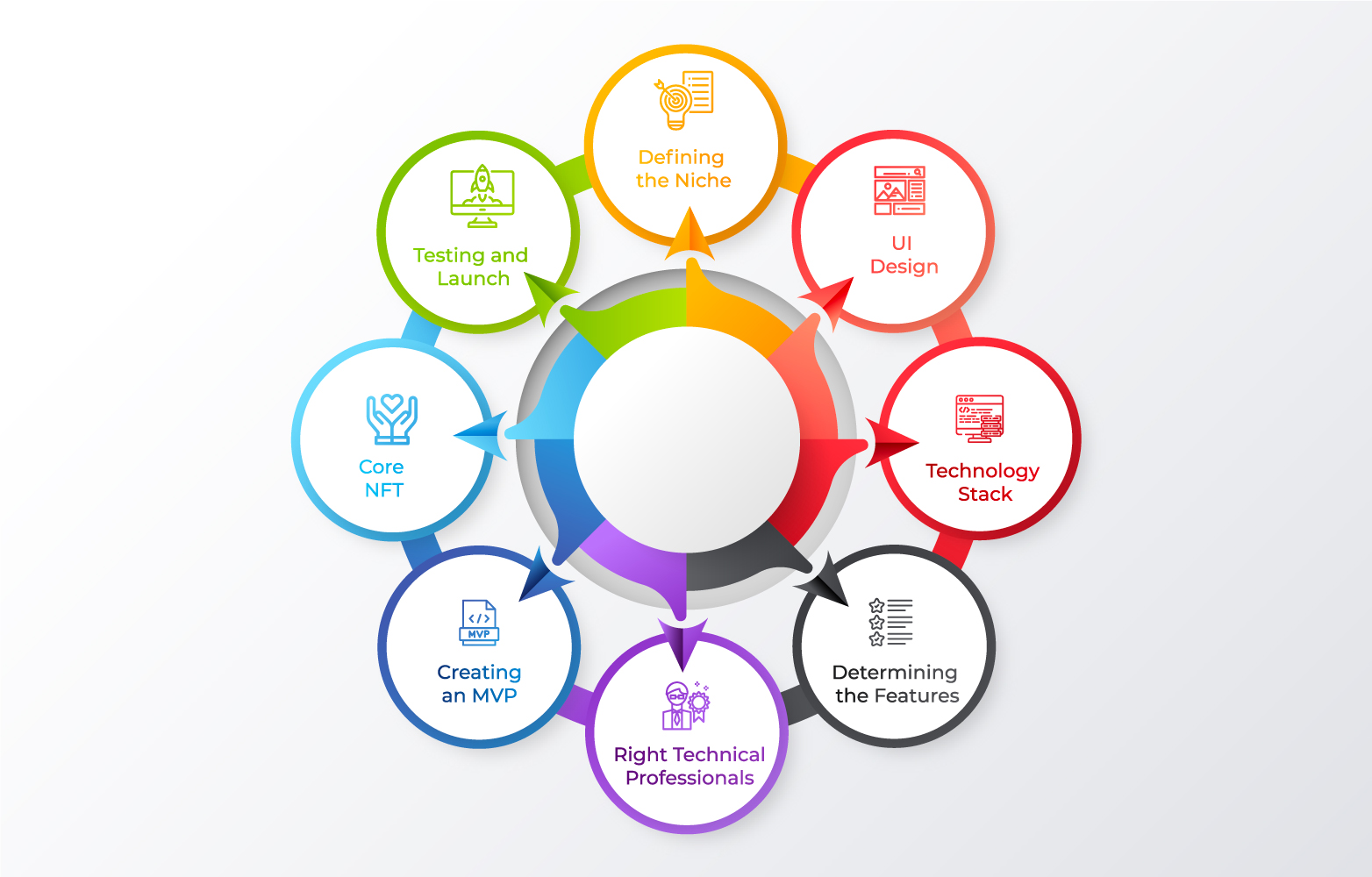

To simplify the development process, we have divided it into eight critical key phases;
1. Defining the Niche of Your NFT Marketplace
Every NFT marketplace focuses on a specific niche of digital assets. This helps the marketplace owners to fulfill the needs of specific communities instead of being a jack of all trades. Before starting NFT marketplace development, you have to determine the digital assets that you will be selling or trading on your marketplace;
- Music
- Images
- Videos
- Trading Cards
- Domain Names
- Games
- Collectables
- Social Media Posts
- Digital Artwork
- Virtual Fashion Items
- Property Ownership Rights
- And more!
2. Working on the UI Design of the NFT Marketplace
Even before you think about the core functionalities of your NFT marketplace, you need to focus on the UI/UX design. Above all, a beautiful and user-friendly UI is the key to creating a good first impression.
You have to think from a user’s point of view while designing the user interface of your NFT marketplace. For this reason, everything on your marketplace should be easily accessible and easy to understand.
It would be highly advisable to hire a Blockchain development company to help you analyze every aspect and purpose of the NFT marketplace development. Moreover, they will be working with various wireframes and prototypes to provide the ultimate design suitable for your NFT marketplace.
Some of the Best NFT Marketplace Designing Practices
Designing the interface of an NFT marketplace is just like eCommerce app designing. In fact, you have to follow almost the same principles in NFT marketplace development. However, you should also pay some attention to the interesting design trends in the crypto industry.
These are some of the current trends in the crypto and blockchain industry;
- The smart use of black backgrounds
- The right implementation of bright colors like yellow, pink, and purple
- The effective use of futuristic elements in the design,
However, before going over the limits, you should know that the design can significantly impact the NFT marketplace development cost. Plus, it is also important to ensure that your platform meets the needs of every user, from novices to NFT gurus. Therefore, these are some must-follow practices in NFT marketplace development;
- Smooth and thoughtful user experience
- Straightforward user navigation flows
- Consistency of design throughout your NFT marketplace
- Responsive design to ensure scalability on various devices
3. Choosing the Right Technology Stack
Before starting NFT marketplace development, you must understand that your platform will cater to a large audience’s needs. Therefore, the technology stack must provide a seamless experience, fast page loading speed, and handle heavy loads.
You can hire NFT marketplace developers to get complete assistance while choosing the technology stack to meet the quality standards and software requirements.
These are known as some of the best technology stacks while building a typical NFT marketplace;
-
- Platform: Blockchain, Amazon Web Services (AWS)
- Programming Languages: JavaScript, TypeScript, Python, Solidity, etc
- Libraries, Tools, and Frameworks: Django, Redux, React, REST framework, Docker, Kubernetes, etc.
- Database and Storage Solutions: Filecoin, PostgreSQL, IPFS
The Architecture of The NFT Marketplace
These are some of the most important architectural components that you must include during NFT marketplace development;
A Marketplace Application
Your NFT marketplace should have a mobile or web application to ensure the smooth trading of NFTs.
– Wallet
You can hire Blockchain developers for integrating a cryptocurrency wallet that ensures storing, exchanging, and sending of digital assets.
– NFT Metadata
Each NFT present on your platform must have the metadata (details).
– IPFS
It is an InterPlanetary File System required for effectively storing from various distributed networks.
– Smart Contracts
Each NFT present on your platform will require a unique identifier for verification. Thus, Smart Contracts are deployed to provide such unique identifiers.
– Blockchain
This technology will create the foundation of your NFT marketplace to enjoy the benefits of decentralization and secure transactions.
4. Determining the Features of Your NFT Marketplace
You have to decide the features that you will be including in your NFT marketplace like OpenSea. This will help you target your customers with better offerings and assurance to engage them for long periods of time. Accordingly, these are some of the most prominent features that you should include during your NFT marketplace development for a seamless experience;
There are some Critical User Side Features;
- NFT Showcase
- Online Auction
- Search Engine and Filters
- User Wallet
- Popular Collections
- Listing
- Payment Methods
- Notifications
- Support
These are some critical admin side features;
- Information Panel
- Website user Management
- Platform Management
- Automatization
- Reports
5. Hiring the Right Technical Professionals
You’ve three options when it comes to building your NFT marketplace development team. Either you can build a dedicated in-house team, hire freelancers, or outsource your project to a top Blockchain development company.
The last option is always more cost-effective and efficient. In fact, it will provide you with better clarity on your budget and long-term goals. The hiring of tech professionals depends on the requirements and scale of your NFT marketplace. Therefore, the Blockchain development company should allow you to individually handpick professionals from their team. You will need developers, designers, QA professionals, and project manager/s.
6 . Creating an MVP
Before building the entire NFT marketplace, it would be if you are able to develop a functional MVP. Thus, by having minimum essential features, you can determine the viability of your NFT marketplace. Furthermore, this would also help you understand how your platform reacts to the features that you are implementing.
You will be able to dodge potential risks and technical errors that might compromise the success of your platform. Moreover, you can take instant measures to eliminate the flaws and even reduce the NFT marketplace development cost.
7. Core NFT Marketplace Development
The core development process will include the implementation of features and technology stacks to develop your own NFT marketplace. Your development team should be following the Agile methodology to ensure a smooth development flow with adaptability to change. The NFT marketplace developers will be providing you with constant updates about each milestone of the development process.
8. Testing and Launch
Testing is a very important process to ensure that every function of your NFT marketplace is working properly as you had intended. Your NFT marketplace developers should organize multiple test cases to test the performance, integrity, reliability, security and resilience of your NFT marketplace.
It is also a good idea to release a demo version of your NFT marketplace to obtain some constructive feedback from real-world users. Moreover, you can also rely on user engagement metrics to improve and make alterations in your NFT marketplace. It will also help you to keep up with the changing market trends and user requirements.
Promising Niches for Your NFT Marketplace that You Should Consider
EdTech Industry
Education businesses can rely on NFTs to sell their lesson plans, courses, and lectures online on NFT marketplaces. Blockchain technology can greatly benefit content creators in effectively tracing distribution and usage.
-
Investment Projects
An NFT marketplace can also be used as a stock exchange trading platform for tangible assets and securities trading. For this reason, the owners have to tokenize the assets and gain permission from the regulators.
-
Authentication Keys
We can also use non-fungible tokens as access keys for various products and content. Your NFT marketplace can work as a trading platform for these assets.
-
Luxury Items
Counterfeiting is a huge problem for luxury goods such as shoes, clothes, jewellery, watches, etc. Using an NFT token for each item could be a great measure for providing authenticity and ownership rights.
NFT Marketplace Development Cost Like OpenSea
There are multiple internet and external factors that might determine the total cost of developing an NFT marketplace. In fact, It is very hard to provide you with an accurate estimate of NFT marketplace development cost. Accordingly, factors like technology stacks, development timeframe, the scale of the marketplace, and features can have a huge impact on the total development cost.
Still, to provide you with a rough estimate about the budget to build an NFT marketplace like OpenSea, this chart will give a good clarification.
| Scope | Approximate Time | Cost ($30/ hour*) |
|
||
| Creating a project backlog | 24 hrs | 720 |
| Creating the project architecture | 18 hrs | 540 |
| Working on the middleware | 9hrs | 270 |
|
||
| Configuring the back-end | 24hrs | 720 |
| CI/CD, AWS instance | 38hrs | 1140 |
| Structure of the database | 50hrs | 1500 |
| Customized CRUD | 50hrs | 1500 |
| Administration & Authorization | 50hrs | 1500 |
| Defining User Roles | 26hrs | 780 |
| Creating the answer layer | 60hrs | 1800 |
| Building transaction logic | 50hrs | 1500 |
| Integrating NFTs | 96hrs | 2880 |
|
||
| Defining project settings | 12hrs | 360 |
| Building the homepage | 42hrs | 1260 |
| Creating a wallet page | 12hrs | 360 |
| Building the earnings page | 36hrs | 1080 |
| Making the profile page | 30hrs | 900 |
| Setting up a history page | 30hrs | 900 |
| Building the NFT page | 54 hrs | 1620 |
|
||
| Drafting deployment documents | 20 hrs | 600 |
| Drafting descriptive documents | 20 hrs | 600 |
| Working on the production environment (CI + AWS EC2_ | 26 hrs | 780 |
|
||
| Drafting and maintenance of the backlog | 36 hrs | 1080 |
| Scheduling meetings, reviewing scrums | 36 hrs | 1080 |
| Communicating and management | 36 hrs | 1080 |
| QA Testing | 180 hrs | 5400 |
|
Total |
1065 hrs | $31,950 |
How MobileCoderz Can Help You With NFT Marketplace Development?
If you are planning to develop an NFT marketplace, then you have to hire Blockchain developers from a prominent NFT marketplace development company like MobileCoderz. We have an expert team of developers, designers, QA professionals, and project managers who can streamline your development process with ease.
Our Blockchain development company has extensive experience with Blockchain technology, NFTs, Smart Contracts, edge computing, and more. These are some key benefits of choosing MobileCoderz for NFT marketplace development;
- Military-grade security protocols
- Complete transparency in development
- Quick support and dispute solutions
- Custom UI/UX according to your choice
- Customizable features implementation
- Cross-platform compliance
- Ready-to-use integrations
Common FAQs Related to NFT Marketplace Development
1. How are NFTs different from cryptocurrencies?
NFTs are cryptographic assets present on a Blockchain with encryption and identification codes. Therefore, each NFT is different from the others with a unique identity. Unlike cryptocurrencies, NFTs cannot be duplicated or exchanged at equivalency. For this reason, you can just change the ownership of NFTs.
2. What can I tokenize with NFTs?
We can tokenize almost anything to an NFT. In fact, we can also associate NFTs with real-world assets such as real estate or gold. Thus, you just have to list your NFT on a marketplace for trading.
3. What are the reasons behind the popularity of NFTs?
These are some of the prominent reasons behind the popularity of NFTs;
- NFTs give value to virtual assets like digital art or other media
- They can have volatility
- NFTs have become a good medium for trading among investors
- NFTs are gaining popularity among the mainstream audience
4. Can NFTs be replicated?
No, unlike cryptocurrencies, it is not possible to replicate NFTs because each NFT is encrypted with a unique cryptographic code. The code of this NFT is stored in a Blockchain network in an immutable form.
-

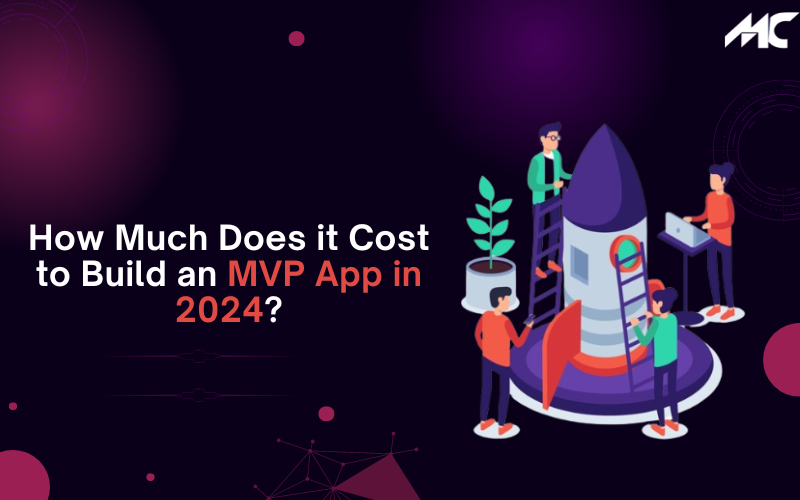 How Much Does it Cost to Build an MVP App in 2024?
How Much Does it Cost to Build an MVP App in 2024? -

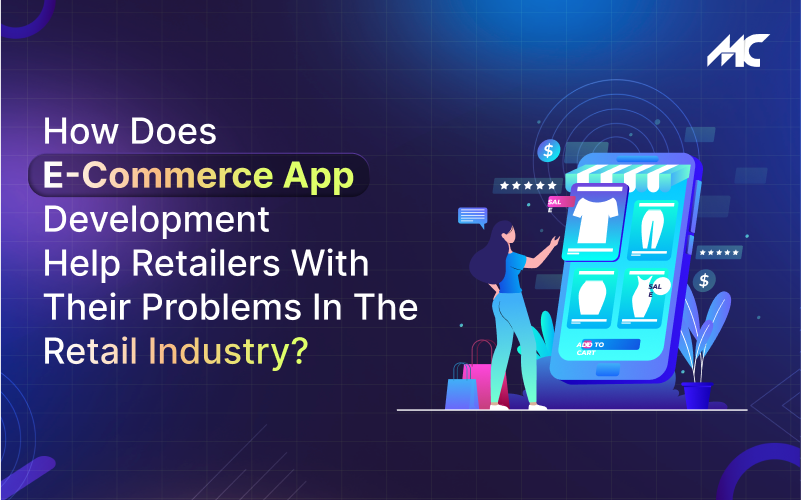 How Does E-Commerce App Development Help Retailers With Their Problems in the Retail Industry?
How Does E-Commerce App Development Help Retailers With Their Problems in the Retail Industry? -

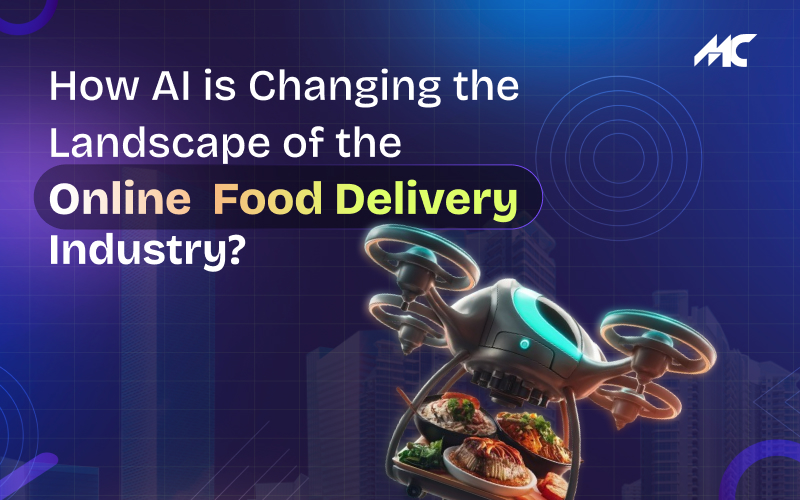 How AI is Changing the Landscape of the Online Food Delivery Industry?
How AI is Changing the Landscape of the Online Food Delivery Industry?



